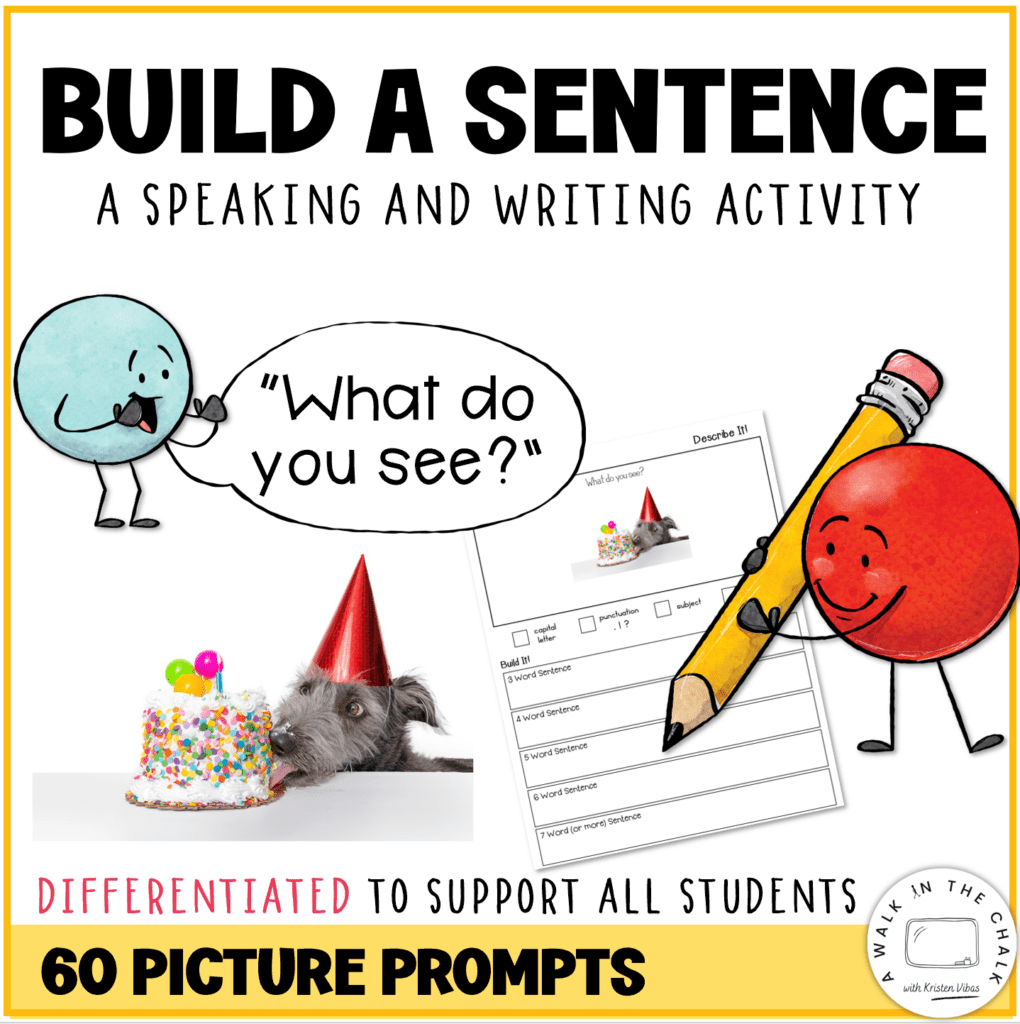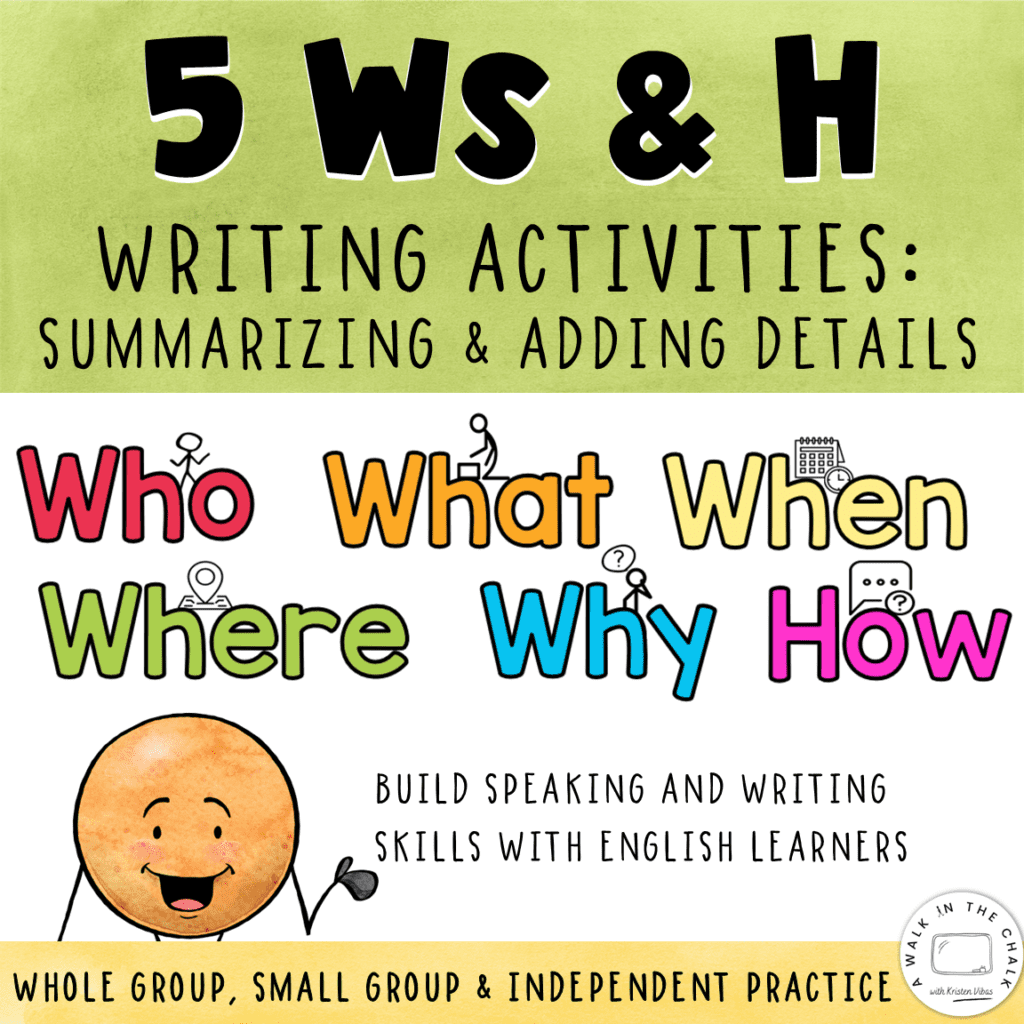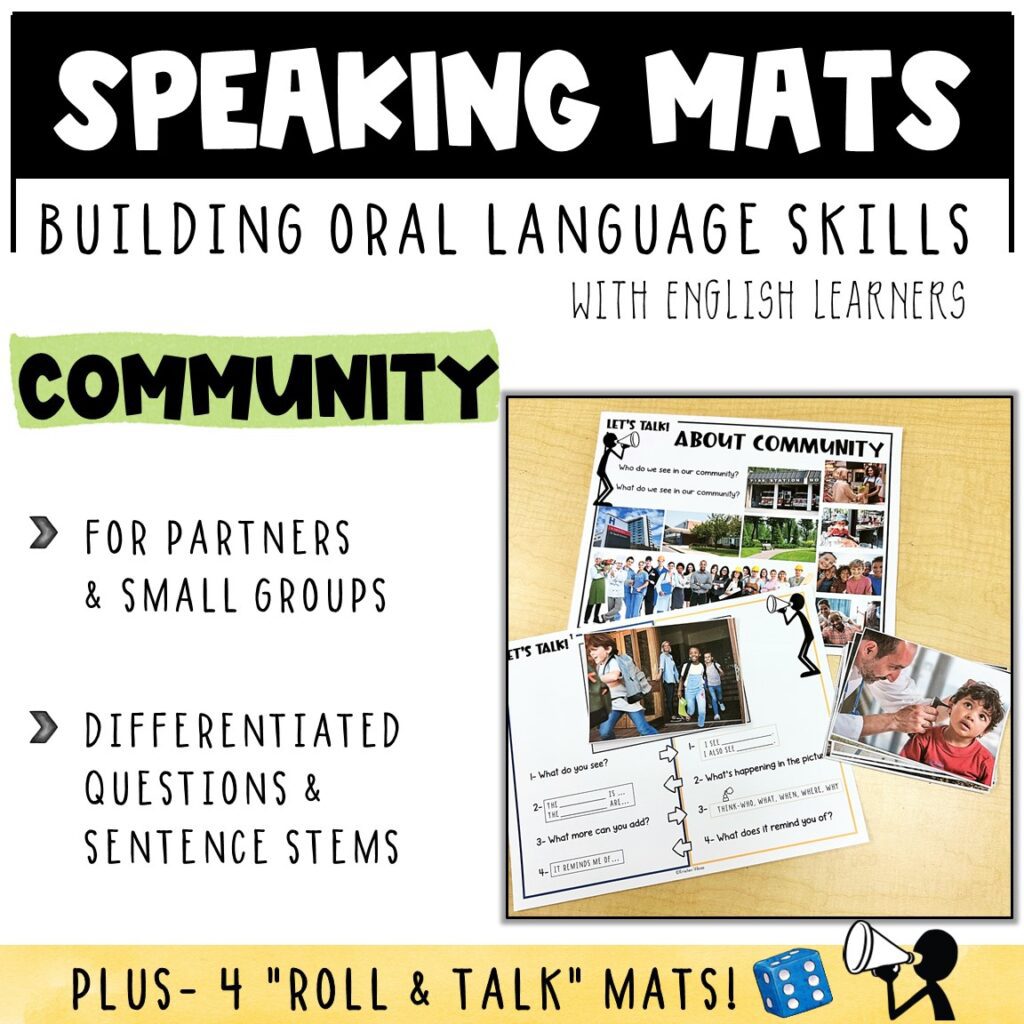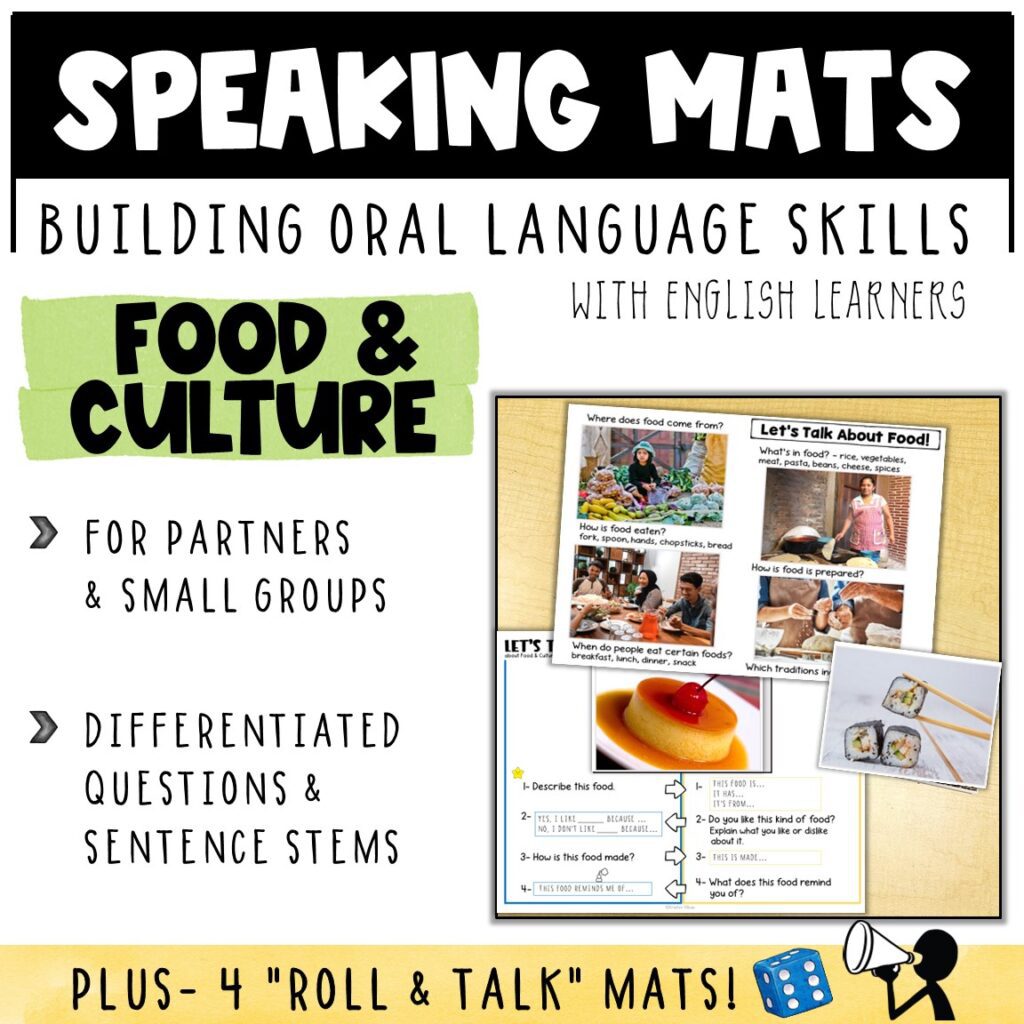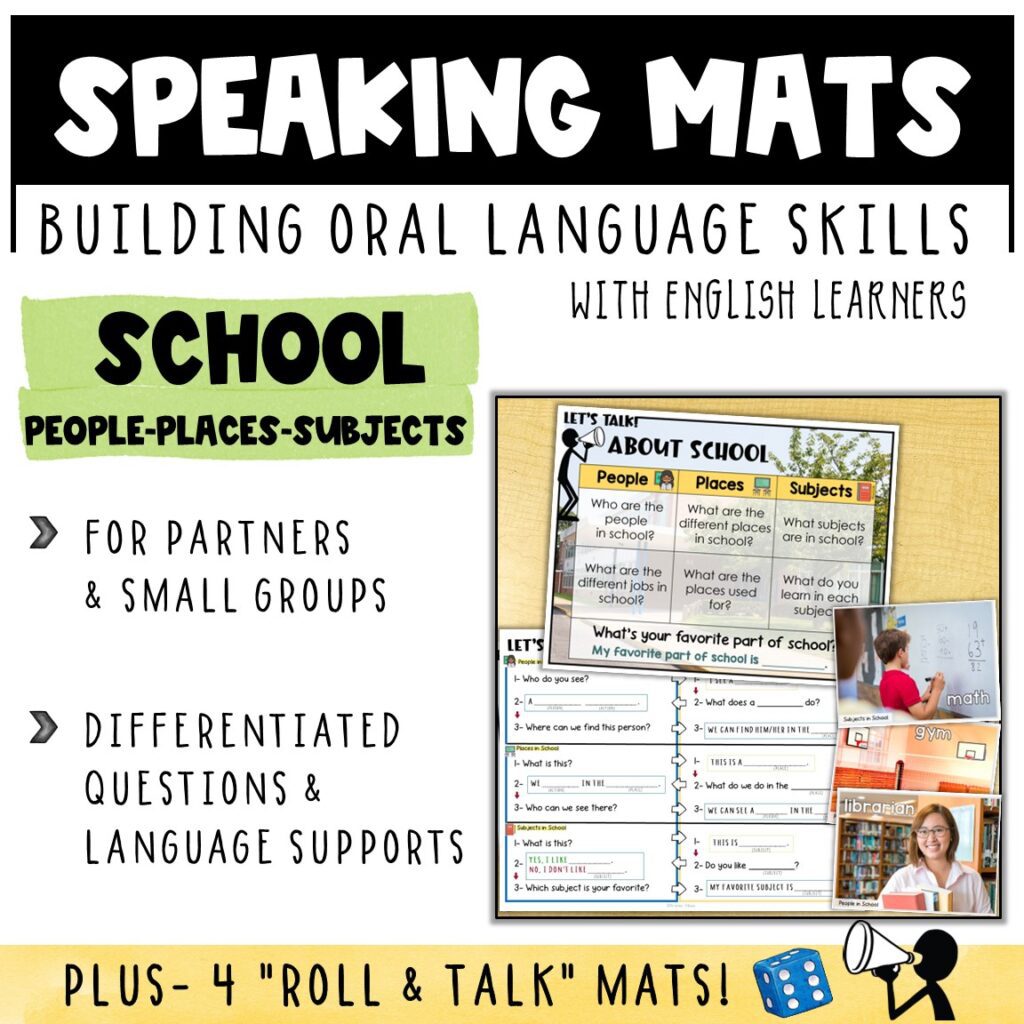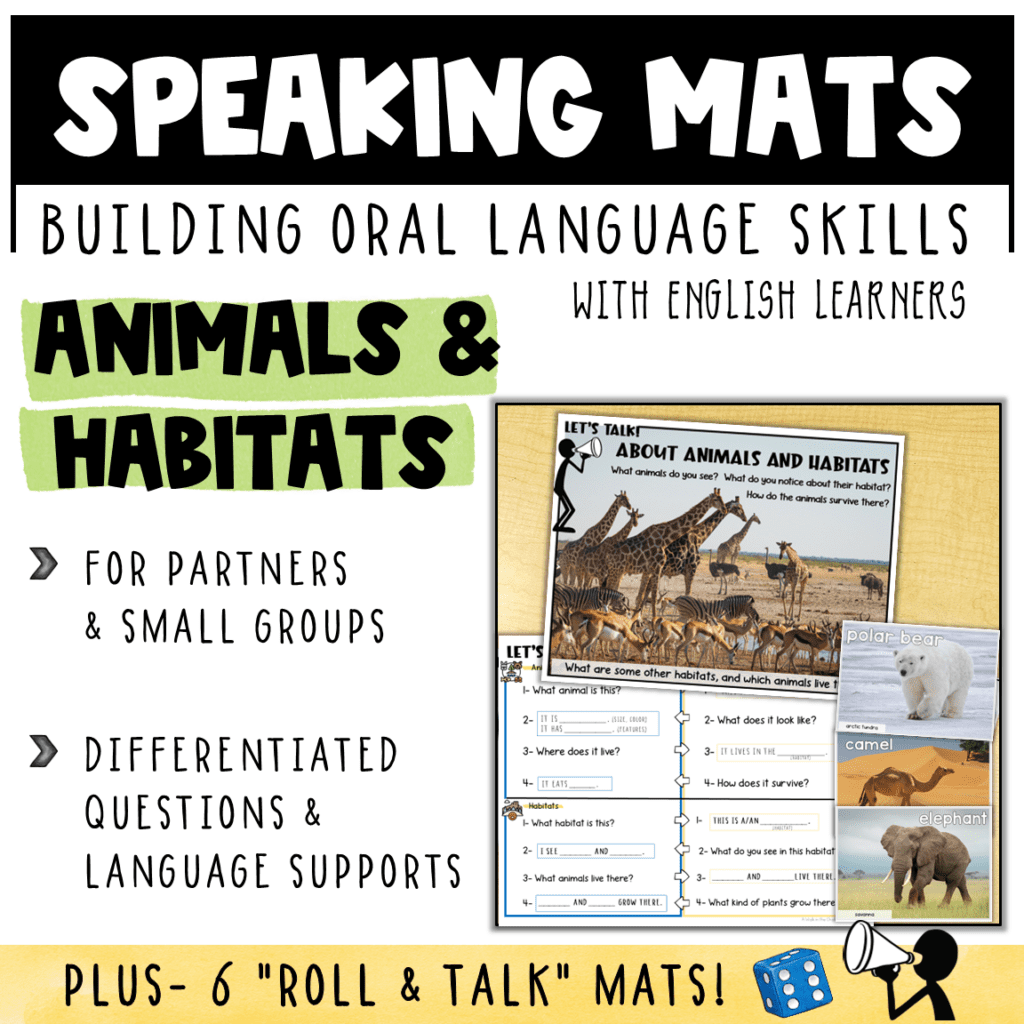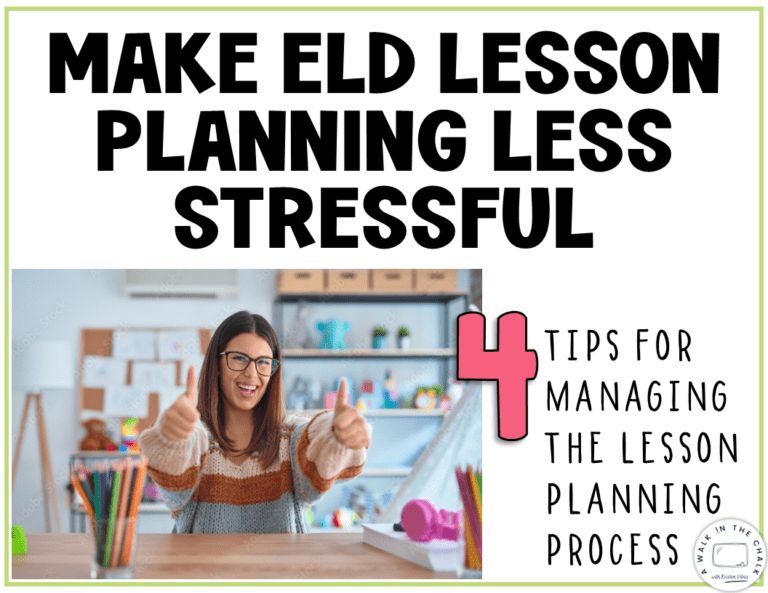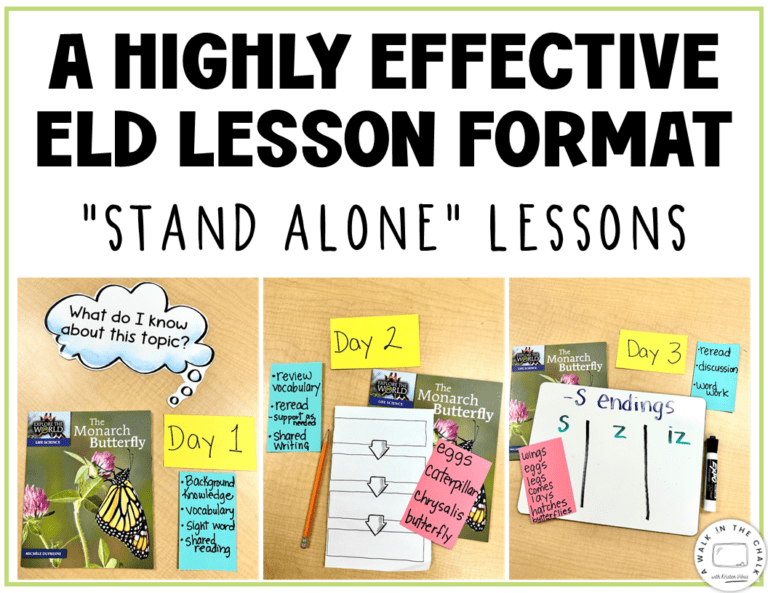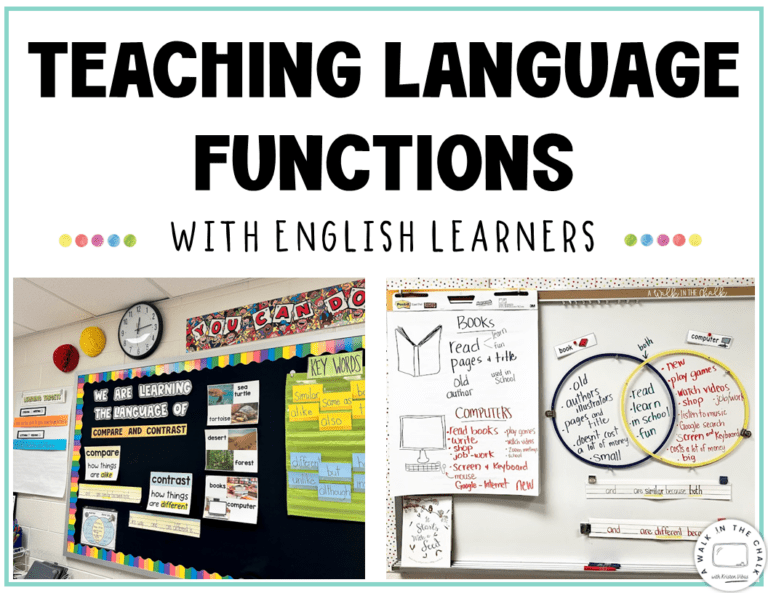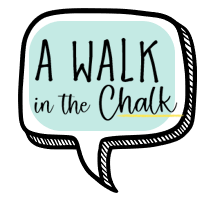ESL teachers often have the challenge of planning lessons for large caseloads that include students at varying grade and language proficiency levels. Let’s face it, lesson planning can feel overwhelming! So how can it become more manageable? I’ve got a structure that’ll help! 🙌
Manage the Lesson Planning Process
One way to make lesson planning for our English learner groups more manageable is to have a bank of effective go-to ELD lesson activities that can be pulled from as needed. There are 5 categories of lesson/activities that I incorporate into my ELD instruction.
- On-Going Weekly Activities
- Warm-Up Activities
- Language Function Unit Lessons
- Stand Alone ELD Lessons
- “Go-To” Lesson Activities
My “Go-To” lessons are high-quality language building activities that I don’t require any planning because they are “one and done” AND readily available. I like to think of them as my “tried and true, grab and go” activities that meet the needs of my students.
Why “Go-To” Lesson Activities Useful
There are a variety of circumstances for why pulling out a “go-to” activity is helpful. Perhaps…
1- I ran out of lesson planning time and need to quickly gather up a lesson for a group that I’m pulling in a few minutes. Raise your hand if that’s ever happened to you. ✋🏼
2 – I need sub plans that a sub can easily follow for several groups.
3 – I’m still getting to know my students as learners and haven’t started planning targeted ELD lessons yet.
4- Fall, winter or spring break is in a couple days and there’s not enough time to start a new unit.
5 – I also use “go-to” activities when one of my language function units is finishing up. I don’t start my next unit until ALL my small groups are done with the current unit, so I add go-to activities to my lesson plan book for the groups that are finished and “waiting” on the next unit.
Examples of Highly Effective Go-To Activities
Build a Sentence – a speaking and writing activity that’s easily adaptable for ALL proficiency levels.
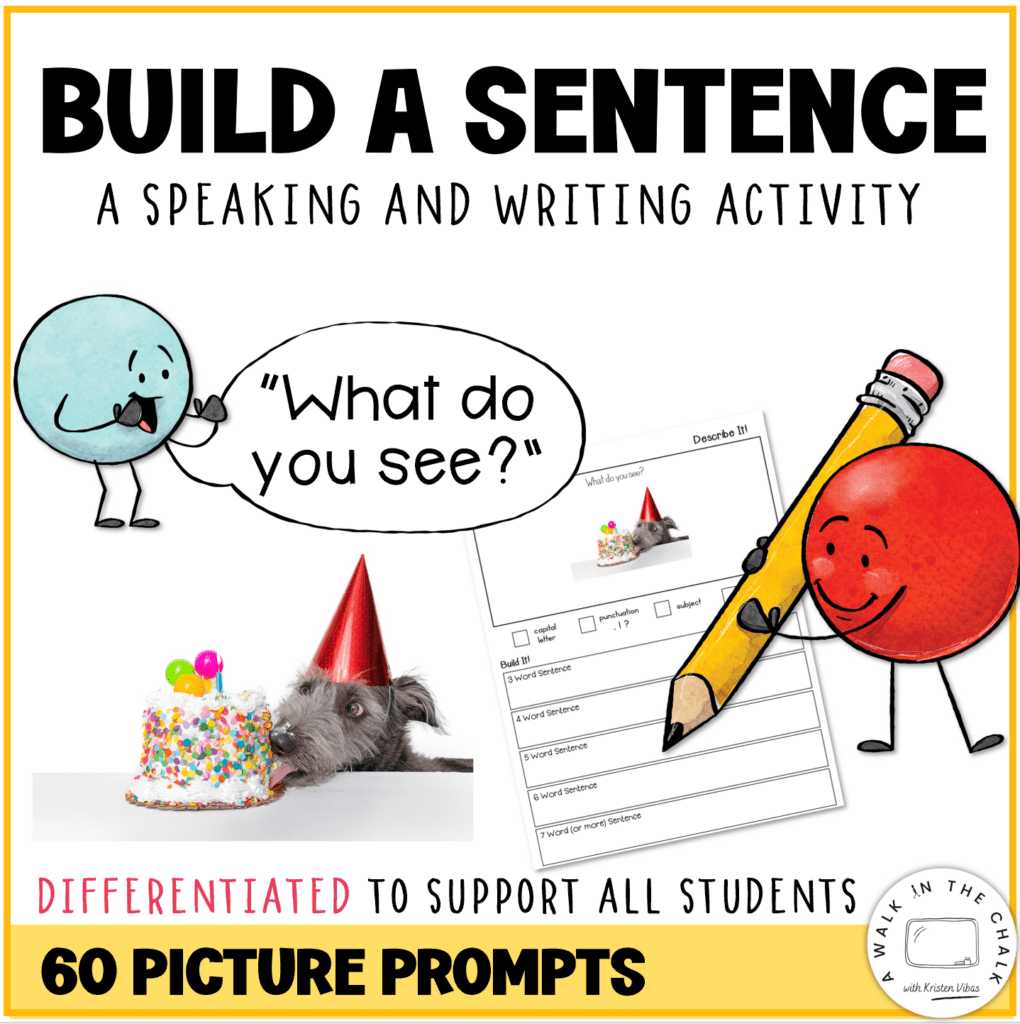
This activity uses the Picture Word Inductive Model strategy to generate words for a focus photo, then uses those words to create sentences of varying lengths. Student pages come in four differentiated levels for each of the 60 focus photos. There’s a ton of variety here; and my students love it.
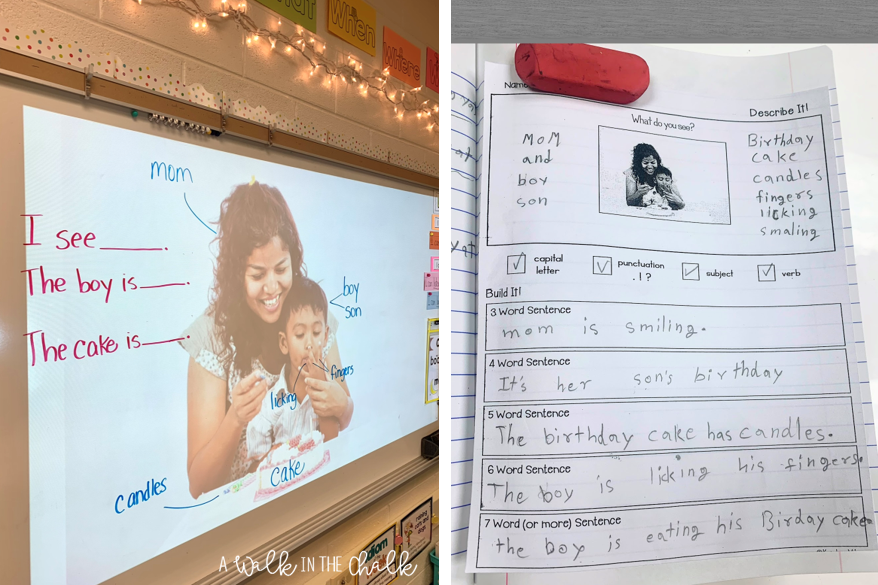
Short Films for teaching comprehension skills is another student favorite. Also easily adaptable for varying proficiency levels. I can usually spread these lessons out over a couple of days, which is nice. The wordless short films allow ALL students to participate and to think about the characters and events in the story.

Anytime I can fit in a short film comprehension activity my students are always engaged and eager to participate. It’s a fun opportunity to build vocabulary and language comprehension skills.
5 Ws and H – a speaking and writing activity that focuses on adding details and summarizing.

Using a focus photo, I start with modeling how to answer who, what, when, where, why and how questions, then that information is used to create detailed sentences. As we continue to use this resource over time, it becomes a warm-up activity and sometimes a homework activity.
Using Picture Prompts for ELD also uses focus photos (are you seeing a theme here?😉) to generate words, phrases and sentences about the pictures. Additionally, students practice asking questions and making predictions.

Speaking Mats for building listening and speaking skills. My students love these! It’s the perfect grab and go lesson. However, I will say that this one does require some prep work. I print the materials on cardstock and laminate the mats and cards. I store them in large photo boxes that I can easily pull out as needed.
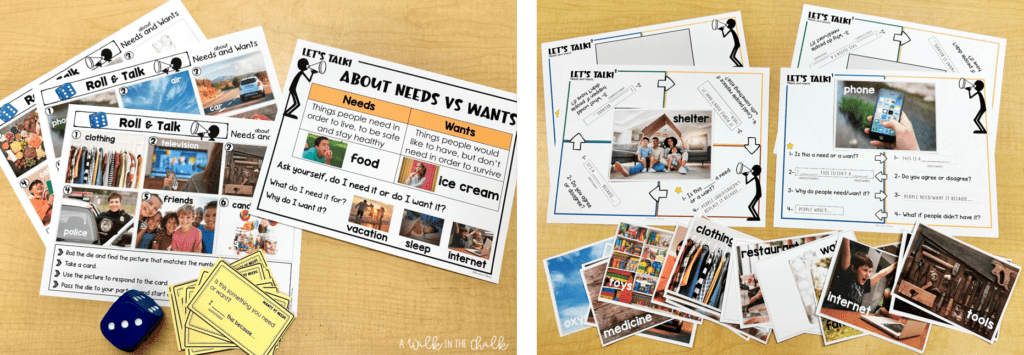
Each topic comes with a Building Background Knowledge and Vocabulary Poster that I use to introduce the activity. Then my students can either play the Roll & Talk activity (pictured on the left) where they take turns rolling a die and answering questions about the pictures, or they can pair up with a partner or in a small group to use the Let’s Talk! speaking mats (pictured on the right) to ask and answer questions about the pictures.
What Do These Go-To Activities Have in Common?
- easily adaptable to multiple grade levels
- easily adaptable to multiple proficiency levels
- no prep-work, simply print and go!
- activities build language skills in all domains
- activities are engaging and fun for students
Make lesson planning more manageable by adding a few “go-to” activities to your teaching toolbox. When the situation arises and you need to quickly pull together a QUALITY language building lesson, you can feel confident that your students are getting what they need, and so are you. 🙌
Happy Planning!

Effective and Engaging Go-To Activities👇
